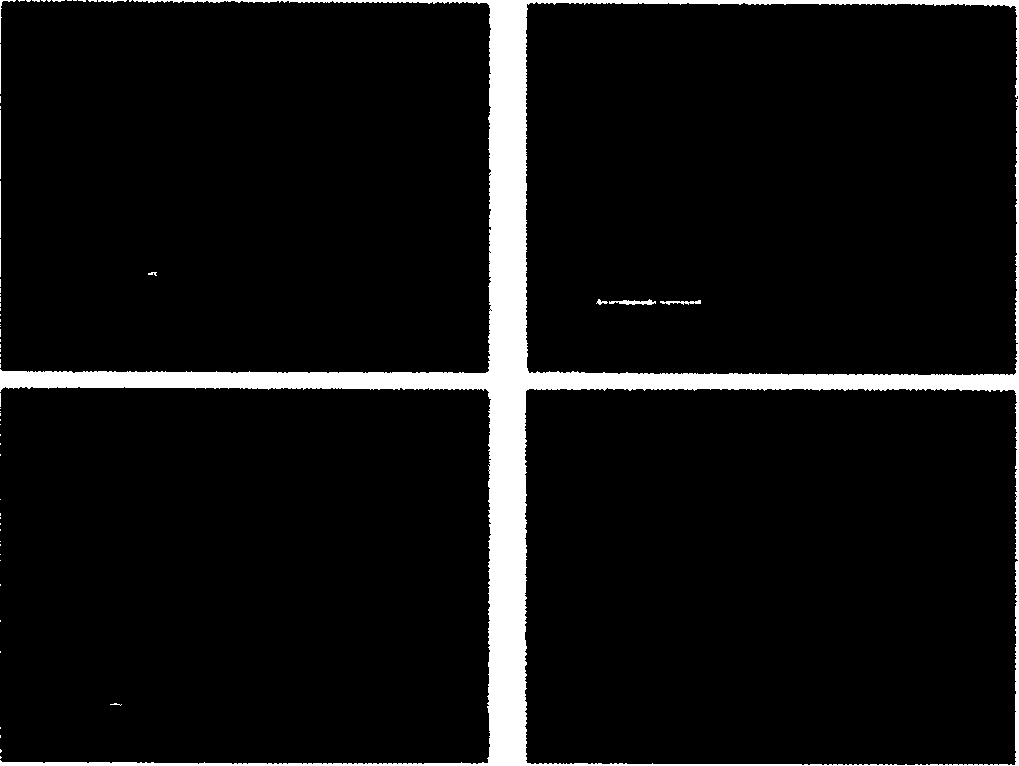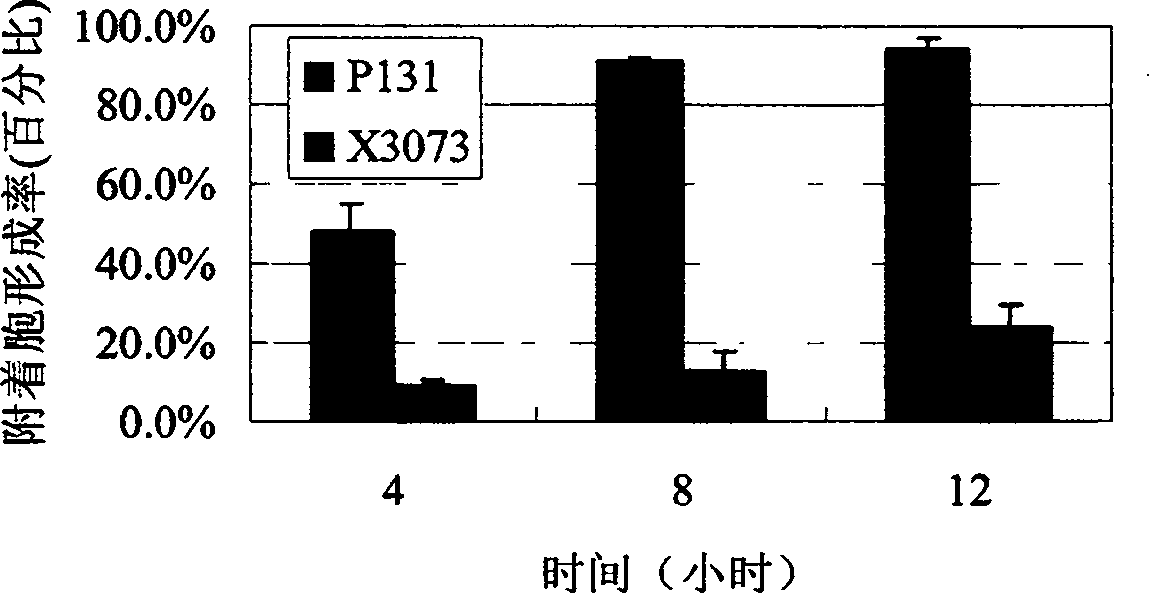Gene MgPTH12 for controlling mature and pathogenicity of fungi appressorium derived from Magnaporthe grisea and its uses
A virulence, piriformis technology, applied in the direction of antifungal, genetic engineering, plant genetic improvement, etc., can solve the problem that piriformis cannot form normal form and melanized appressorium, reduce the ability to form infection nails, and reduce infection. Problems such as the reduction of pathogenicity of diseased rice varieties
- Summary
- Abstract
- Description
- Claims
- Application Information
AI Technical Summary
Problems solved by technology
Method used
Image
Examples
Embodiment 1
[0032] Example 1: Screening and identification of mutants.
[0033] 1. Preparation of conidia
[0034] The hyphae of each REMI transformant of pyrosporium bacterial strain P131 is fully interrupted, and equably spreads to the tomato juice oatmeal substratum (every liter contains 150ml tomato juice, 30-50 gram oatmeal boils 30 minutes and filters and gets filtrate, 20 grams of agar) plate, cultivated at 26°C-28°C, when the new mycelium can be seen growing out of the medium surface, gently wash off the mycelium with a cotton swab, rinse with water, cover with a single layer of gauze, and put it on 26 Cultivate under light at ℃-28℃ for 48 hours, and a large number of pyrosporium spores can be seen on the surface of the medium.
[0035] 2. Preparation of spore suspension: Wash the spores described in 1 and filter them with double-layer lens paper to filter in a 50ml centrifuge tube, centrifuge at room temperature at 4000rpm for 5 minutes to collect the spores, and then suspend th...
Embodiment 2
[0042] Example 2 Co-segregation analysis of mutant phenotype changes and insertion markers
[0043] The method of genetic hybridization was used to analyze the co-segregation of the insertion marker hygromycin resistance gene and the mutant phenotype in the mutant, and the mutant was mated with a pear that did not have the mutant phenotype and hygromycin resistance, and had the opposite mating type S1528 strain S1528 was hybridized, and the appressorium morphology and hygromycin resistance of its ascospore progeny were analyzed. The specific methods are as follows:
[0044] The above-mentioned mutant X3073 was confronted with the Pyrospora strain S1528 without hygromycin resistance and with normal appressorial morphology on tomato oatmeal medium. First cultivate at 25°C until the edges of the colony are about to join together, then move it to 20°C for light culture, and about 20 days form a black protruding ascus at the junction of the colony. Pick the mature ascus shell, squ...
Embodiment 3
[0047] Example 3 Cloning of the gene MgPTH12 controlling appressor maturation and morphological variation of Pyrospora sp.
[0048] 1. Plasmid Rescue
[0049] Through the rescue of the inserted plasmid in the mutant, the genome sequence of the side end of the corresponding insertion site was obtained, and the insertion position of the plasmid in the mutant was determined. The specific method is as follows:
[0050] Select the insert plasmid pUCATPH (Lu, S. Lyngholm, L, Yang, G. Bronson, C. Yoder, O.C. 1994. Tagged mutants at the Toxl locus of Cochliobolus heterostrophus by restriction enzyme-mediated integration. Proc. Natl. Acad. Sci. USA 91: 1264-12653) the restriction endonuclease XhoI without restriction site in pUC18 part completely digested the genome of mutant X3073. After ethanol precipitation and purification, T4 DNA ligase was used for self-ligation, and the competent cell JM109 of Escherichia coli was transformed. Plasmids of transformants were extracted and iden...
PUM
| Property | Measurement | Unit |
|---|---|---|
| length | aaaaa | aaaaa |
Abstract
Description
Claims
Application Information
 Login to View More
Login to View More - R&D
- Intellectual Property
- Life Sciences
- Materials
- Tech Scout
- Unparalleled Data Quality
- Higher Quality Content
- 60% Fewer Hallucinations
Browse by: Latest US Patents, China's latest patents, Technical Efficacy Thesaurus, Application Domain, Technology Topic, Popular Technical Reports.
© 2025 PatSnap. All rights reserved.Legal|Privacy policy|Modern Slavery Act Transparency Statement|Sitemap|About US| Contact US: help@patsnap.com



